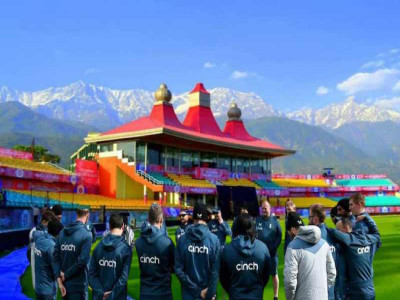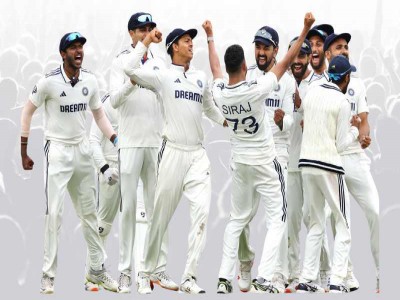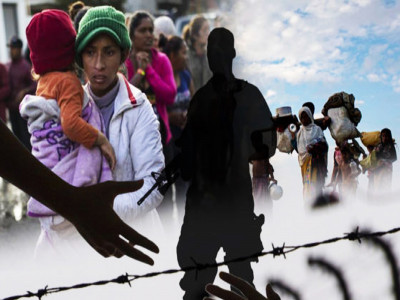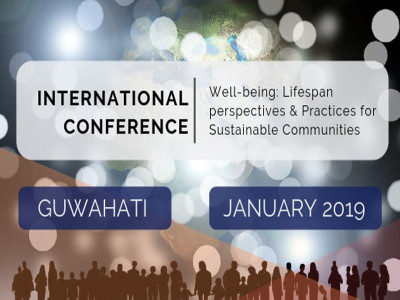
Unbreakable: How Team India Fought, Fell, and Rose to Win Their Maiden Women’s World Cup
A campaign that began with dominance, stumbled through despair, and ended in destiny.
The 2025 ICC Women’s Cricket World Cup will forever be remembered as the tournament that redefined Indian women’s cricket. For years, they had flirted with glory - runners-up in 2005 and 2017, heartbreaks that lingered.
But this time, the script flipped.
From a flying start to three gut-wrenching defeats, and finally, a storming comeback that swept away the world’s best - India’s path to their first-ever Women’s ODI World Cup title was a tale of resilience, unity, and unshakable belief.
The Perfect Start – Calm Before the Storm
The World Cup, hosted across venues in India, began in dream fashion for Harmanpreet Kaur and her squad.
India opened their campaign with a confident win over Sri Lanka, powered by Deepti Sharma’s fluent half-century and a sharp spell with the ball. The momentum continued with a commanding victory over Pakistan, as India’s all-round brilliance lifted them to the top of the group table.
Fans were euphoric. The team looked balanced - aggressive with the bat, disciplined with the ball, and united under Harmanpreet’s calm leadership.
But World Cups test character as much as skill. And that test was about to begin.
The Slump – Three Tight Losses and Growing Doubt
After a perfect start, India’s campaign hit turbulence.
In back-to-back heartbreakers, they lost three close matches to South Africa, Australia, and England, all from commanding positions. Each loss followed a familiar pattern: promising starts, mid-innings collapses, and hesitation under pressure.
Critics called it “the curse of the crunch overs.” The media grew skeptical. Was history about to repeat itself? Would India falter again, like in 2017?
But Harmanpreet’s response was steady and firm: “We haven’t come this far to doubt ourselves now. One spark and the fire will return.”
The Turning Point – Learning to Fight Back
That spark arrived against New Zealand.
Facing possible elimination, India posted a mammoth 340 for 3, thanks to breathtaking centuries from Pratika Rawal and Smriti Mandhana. The bowlers then defended the total with clinical precision - Deepti Sharma and Renuka Singh Thakur stifling the Kiwis in the middle overs.
It was more than just two points - it was a statement.
From there, momentum shifted. India wrapped up the group stage with a no-result against Bangladesh, sneaking into the semi-finals as the fourth-placed team.
They were wounded but alive.
The Semi-Final – Slaying the Giants
If one match changed Indian women’s cricket forever, it was the semi-final against Australia at Navi Mumbai.
Set a daunting 338 to chase, India turned adversity into art. Jemimah Rodrigues unleashed a breathtaking 127, while Harmanpreet Kaur’s composed 89 anchored the innings. Together, they tore through Australia’s legendary attack.
When Amanjot Kaur hit the winning boundary, the roar from the stands said it all. India had beaten the seven-time world champions.
“We’ve waited 18 years for this - now it’s time to finish what we started,” Harmanpreet said post-match, eyes blazing with belief.
The Final – Faith Forged in Fire
At DY Patil Stadium, Navi Mumbai, a sea of tricolors awaited the grand finale: India vs South Africa. Both sides were chasing history; both were undefeated in spirit.
Batting first, India compiled 298/7 - an enterprising 87 from opener Shafali Verma, a crucial rebuilding 53 from Deepti, and a late blitz by Richa Ghosh of 41.
In reply, South Africa began brightly but faltered under pressure. Deepti Sharma’s magical spell (5/39) turned the tide, dismissing Laura Wolvaardt and Marizanne Kapp. Shafali Verma chipped in with two crucial wickets.
As Harmanpreet Kaur caught the final edge behind the stumps, the team erupted - tears, laughter, disbelief, and pride colliding in one unforgettable moment.
One More Hero Behind the Glory
Among the loudest cheers that night was one for Pratika Rawal, the 24-year-old opener who had lit up the group stages before being ruled out with an ankle injury in the match against Bangladesh. Her early brilliance and fighting spirit had set the tone for India’s campaign.
From Tears to Triumph – A Cultural Moment
For India, this wasn’t just a sporting victory - it was a national awakening.
In small towns and remote villages, girls watched on phones and TVs, seeing themselves reflected in the blue jerseys for the first time.
As journalists drew parallels to India’s 1983 men’s World Cup, Harmanpreet smiled and said: “Let this be our 1983 - the start, not the end.”
The Rewards of Glory – Recognition Beyond the Trophy
India’s triumph wasn’t just celebrated in emotion; it was rewarded in record fashion. The ICC announced a winner’s purse of USD 4.48 million (approximately ₹39 crore), part of a historic USD 13.88 million total prize pool - the highest ever in the history of women’s cricket.
In addition, BCCI honored Team India with ₹51 crore in cash rewards, acknowledging the players, coaches, and support staff for scripting one of India’s greatest sporting stories. More than money, it symbolized respect, equality, and recognition for the women who lifted the nation’s pride to new heights.
The Moment That Can Change Everything
As the lights dimmed over DY Patil that night, Harmanpreet Kaur lifted the trophy and whispered to Deepti Sharma: “We’ve waited a lifetime for this.”
India’s road to glory wasn’t paved with dominance - it was carved out of struggle, self-belief, and sheer grit.
The 2025 ICC Women’s Cricket World Cup will be remembered not just for how India won, but for how they refused to give up.
Disclaimer: The opinions expressed in this article are those of the author's. They do not purport to reflect the opinions or views of The Critical Script or its editor.

Newsletter!!!
Subscribe to our weekly Newsletter and stay tuned.

















Related Comments